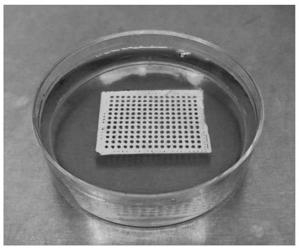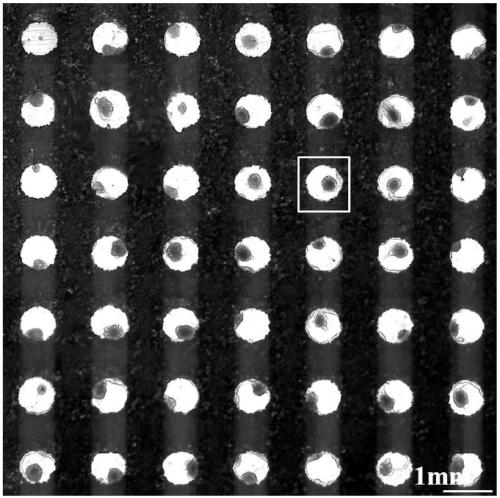Cell reprogramming method
A reprogramming and cell technology, applied in animal cells, vertebrate cells, genetically modified cells, etc., can solve the problems of non-uniform cloning, low efficiency, and difficulty in automation, and achieve high cloning quality, reduce difficulty, and facilitate tracking. Effect
- Summary
- Abstract
- Description
- Claims
- Application Information
AI Technical Summary
Problems solved by technology
Method used
Image
Examples
Embodiment Construction
[0034] A novel high-efficiency cell reprogramming method provided by the present invention will be described in detail below with reference to the accompanying drawings and examples.
[0035] In the embodiment of the present invention, the limited growth area in the microporous structure increases the occurrence of intercellular adhesion, promotes MET (mesenchymal-epithelial transition), and finally improves the efficiency of iPSCs generation. Finally, the present invention obtains more than 90% of Nanog-positive cell clusters on the superhydrophobic microwell array chip (hereinafter referred to as the chip, which has a micropore structure), and the expression of the MET marker gene is significantly higher than that of the traditional cell culture dish. The reprogramming efficiency was improved by 5 times. Second, cell tracking is more convenient in the microwells of the superhydrophobic microwell array chip than in traditional cell culture dishes. In the experiment, the aggr...
PUM
| Property | Measurement | Unit |
|---|---|---|
| pore size | aaaaa | aaaaa |
| diameter | aaaaa | aaaaa |
Abstract
Description
Claims
Application Information
 Login to View More
Login to View More - R&D
- Intellectual Property
- Life Sciences
- Materials
- Tech Scout
- Unparalleled Data Quality
- Higher Quality Content
- 60% Fewer Hallucinations
Browse by: Latest US Patents, China's latest patents, Technical Efficacy Thesaurus, Application Domain, Technology Topic, Popular Technical Reports.
© 2025 PatSnap. All rights reserved.Legal|Privacy policy|Modern Slavery Act Transparency Statement|Sitemap|About US| Contact US: help@patsnap.com



